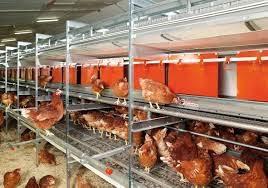|
Following the cascade of commitments from food manufacturers, restaurants, and institutions in 2019 and 2020, cage-free sourcing was anticipated by 2025 but with the proviso that individual egg suppliers would make progress in implementing the transition to cage-free housing. The response by producers has been to satisfy demand but to adopt a wait-and-see response before committing capital to conversion.
 The HSUS is now monitoring the sourcing of major QSRs and restaurant chains. As with their 2020 playbook they will be attempting to shame companies that they consider to have reneged on their commitments. It appears that IHOP, a chain under the Dine Brands ownership, regarded as a soft target, is in the crosshairs. HSUS is now attempting to force the chain to comply with both cage-free requirements and also to exclude suppliers of pork that house sows in gestation crates. The HSUS is now monitoring the sourcing of major QSRs and restaurant chains. As with their 2020 playbook they will be attempting to shame companies that they consider to have reneged on their commitments. It appears that IHOP, a chain under the Dine Brands ownership, regarded as a soft target, is in the crosshairs. HSUS is now attempting to force the chain to comply with both cage-free requirements and also to exclude suppliers of pork that house sows in gestation crates.
We have seen this movie before. HSUS will pick the most vulnerable companies and will apply intense pressure through social media to elicit a re-commitment. This will then be used to pressure the next in line until all companies re-confirm their promises to source only cage free eggs or pork from sows held in group housing.
It is evident that there will be a clear difference in the response between the retail food segment and the food service and restaurant sectors. Members of the FMI are intensely sensitive to margins and obviously need to stock a range of eggs reflecting prices that correspond to production systems. Customers are offered choice in accordance to their willingnes to pay for intangible attributes such as welfare and sustainability. In contrast, restaurants can afford to pay more for cage-free eggs since it is relatively easier to add the incremental cost to the price of a menu item. Also in the food service sector, the difference in price between cage-free and conventional eggs is less significant than it is to supermarkets. The administrator of a dining facility at Harvard University would be more concerned over student acceptance and avoiding protests than the owner of a tienda or grocery in a low-income area.
Consumers in California pay what EGG-NEWS refers to as a “Pacelle Tax” that was added to food budgets following the implementation of Proposition #2 that was enacted in 2008. The “Pacelle Tax” represents the differential in price between cage-free eggs as mandated in California and the price paid for conventional eggs in states without mandates.
EGG-NEWS has consistently advocated for consumer choice. It is iniquitous for any group or organization to promote regulations or laws based on sentiment that detract from the availability or add to the cost of food without an understanding of the issues and consequences of ballot initiatives. We do not need HSUS and their ilk deciding how we spend our food budgets.
|